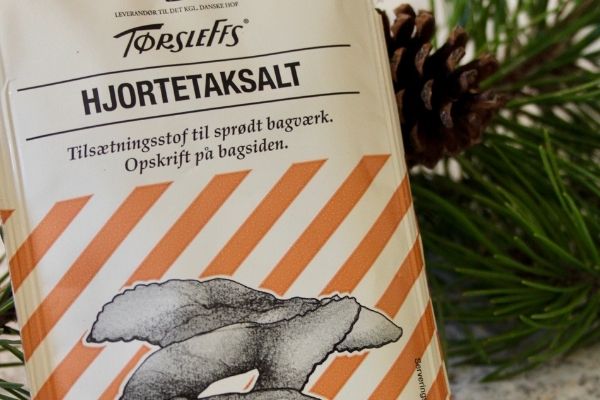This post may contain affiliate links. Please see our disclosure policy.
Danish Cookies are an important part of Christmas hygge, and indulgence is traditional around the holidays.
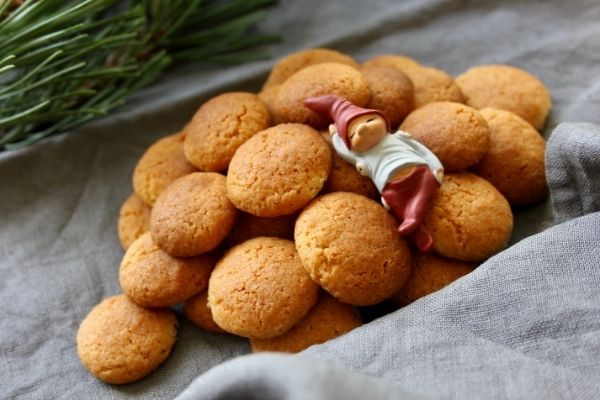
(This post is written by Pia Sonne, a native of Denmark and the writer behind the blog Busy Hands, Quiet Hearts.)
A key component to Danish Christmas hygge is food. All kinds of food, but in particular cookies and treats.
As the days grow so short and dark that most families aren’t able to be home without lights on, we gather around tables with piles of cookies and plenty of coffee, tea, and glögg… and indulge.
A Carte Blanche to Indulge
Danes even have a mantra for this season of indulgence. “Det er ikke hvad du spiser mellem jul og nytår, men hvad du spiser mellem nytår og jul”. We can translate this into the following: It’s not what you eat between Christmas and New Year’s, but what you eat between New Year’s and Christmas.
This saying gives Danes a carte blanche to enjoy all the cookies and treats the Christmas season has to offer. It’s also one of the soundest pieces of dieting advice I’ve come across as it argues for moderation for 11 months of the year and indulgence for one.
If you truly follow this advice, the extra padding will help you get through the deepest of the winter a little warmer and by spring it will have been worked off again.
Amongst the cookies and treats Danes indulge in you find anything from the classic cookie trinity, pebernødder, brunkager, and vaniljekranse, to more niche treats like honninghjerter which take over a month to make, and luciaboller, which really aren’t Danish at all.
Danes don’t have anything like the Norwegian syv slags julekaker, but most families have a symphony of cookies that must be present for it to really feel like Christmas. The cookies and treats listed below are the ones that define Christmas in my family. They are the ones we can’t do without or it won’t feel like Christmas at all.
You’ll need a couple of Danish specialty baking ingredients, namely potash and hartshorn salt, to make most of these recipes. If you can’t find it, you can use baking soda and baking powder as a substitution in a pinch. Where there’s a will, there’s a way and these treats are worth the effort.
Danish Family Traditions
Baking cookies is an important Christmas tradition in many families. My husband grew up with all his cousins coming over to make cookies every year. His dad kept careful watch that no one would eat any (while stuffing his own mouth) while the cookies cooled.
Once I moved away from home, my best friend and I began to hold annual Christmas cookie days, we’d each prepare a couple of the doughs that need to rest beforehand and then we would meet up in the 300sqft studio apartment, where my husband and I lived and fill every surface, even the floors, with cooling cookies.
“Danish” Cookies and Treats
At what point can you call something “Danish”?
Does Luciaboller really qualify as a Danish Christmas treat? Yes and no, it’s obviously not a Danish thing but Danes eat and enjoy them to such an extent that a description of some popular Danish Christmas treats wouldn’t be complete without it.
Most things have come to Denmark by way of Germany or other countries and may have a long history before it even reached this little Scandinavian country. This means the point of origin is not a great way to define what’s Danish.
What about time? We could define Danish from a point in history. We could make an agreement that if it has been made in Danish homes for so long, it can be called Danish. But then again, most cookies haven’t been made at home for all that long.
Baking cookies at home didn’t become a thing until woodstoves became common in the middle of the 19th century.
So the way I have chosen to define Danish cookies and treats is this: loved and eaten by Danes for generations. I hope they will become loved and eaten in your family for generations as well.
Klejner
As my personal favorite, I had to bring klejner up first. These cookies are not baked but fried in lard or oil which makes for a wonderfully textured cookie. Some people enjoy dipping klejner into their coffee because they really soak it up.
Because this cookie wasn’t baked, it’s one of the oldest cookies to be made at home in Denmark (before household ovens were common). We know they have been made at least since medieval times.
With a tool known as a klejnespore you make a slit in the middle. It takes a bit of practice to be able to vride en klejne (twist a klejne) through the small hole in the center.
Seasoned klejne makers make it seem easy peasy. But don’t fret, it can be a fun little family activity to see who can turn the best klejne and it doesn’t affect the taste if they come out wonky.

Brunkager
These little brown cookies are filled with spices, nuts, and sugars to make them extra decadent. Brunkager is one of the cookies that vary a great deal from family to family and particularly from grocery stores to bakeries and homemade. Obviously, most homemade versions are much better than any purchased cookies.
It’s difficult to fully understand how decadent and expensive brunkager must have been when they were first made at home. Even today, the cost of the ingredients in this cookie can add up fast if you make it using some of the special ingredients such as pistachios and pickled orange.
Brunkager are part of the traditional Christmas cookie trinity, which also includes pebernødder and vaniljekranse. If you go somewhere and there are only a couple of cookies on offer, these three are most likely present.
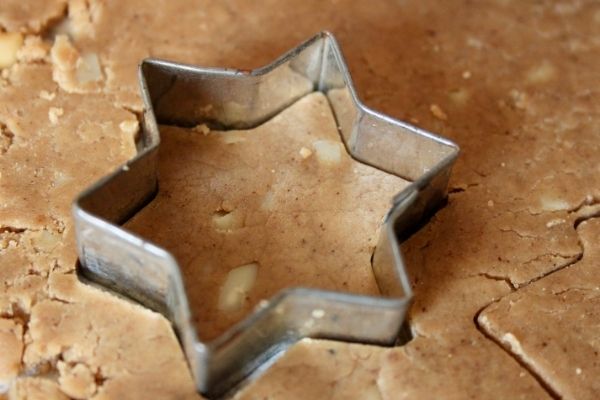
Pebernødder
Pebernødder, pepper nuts, are a favorite amongst Danish children. Danes play more or less sophisticated games with pebernødder. From seeing who can stuff the most in their mouth to the game of mouse, mus, with proper rules to follow.
Originally made with much cheaper ingredients such as rye flour, pebernødder were one of the few cookies Danes could make at home before the advent of the woodstove.
Historically, these cookies were hard as rocks, or nuts as the name indicates. I wouldn’t want to see how many of those I could stuff in my mouth but the advent of hartshorn salt meant they became delicious bites suited for childish games.
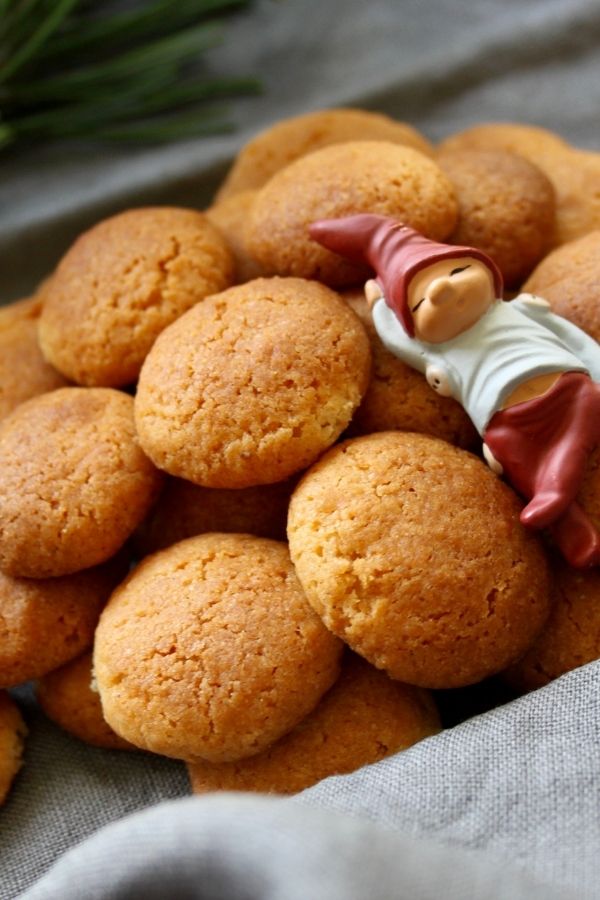
Vaniljekranse (Butter Cookies)
Vaniljekranse is a rather plain type of cookie, but oh so good. Some make these without any nuts and that makes them one of the more allergy-friendly cookies at Christmas time. However, adding almonds so finely chopped you can’t really detect them, elevates the cookies to angel singing levels.
Traditionally made with a meat grinder, many Danes have fond memories of forming an assembly line to produce these cookies. When I was a child, many families still owned a meat grinder for the sole purpose of making vaniljekranse.
Nowadays, many use a piping bag with a star nozzle to achieve the characteristic ridge look. A piping bag quite frankly makes it a lot easier but also a tad less fun.
Jødekager
If the name, Jew cakes, gets your panties all bundle up, you can relax. There are no gory stories behind these cookies. The term jødekager, Jew cakes, was originally used to describe all baked goods made by Jewish bakers in Denmark.
Later, jødekager came to describe a single cookie topped with the then exotic spice, cardamom. Now, these cookies are topped with a sugar, cinnamon, and almond mixture which turns them into little bites of heaven.
To this day, Danish Jews embrace the history of the jødekager and encourage the use of the name. The idea is to honor the original creators of the Danish cookie, and to emphasize the contributions of all faiths to a Danish culinary tradition.
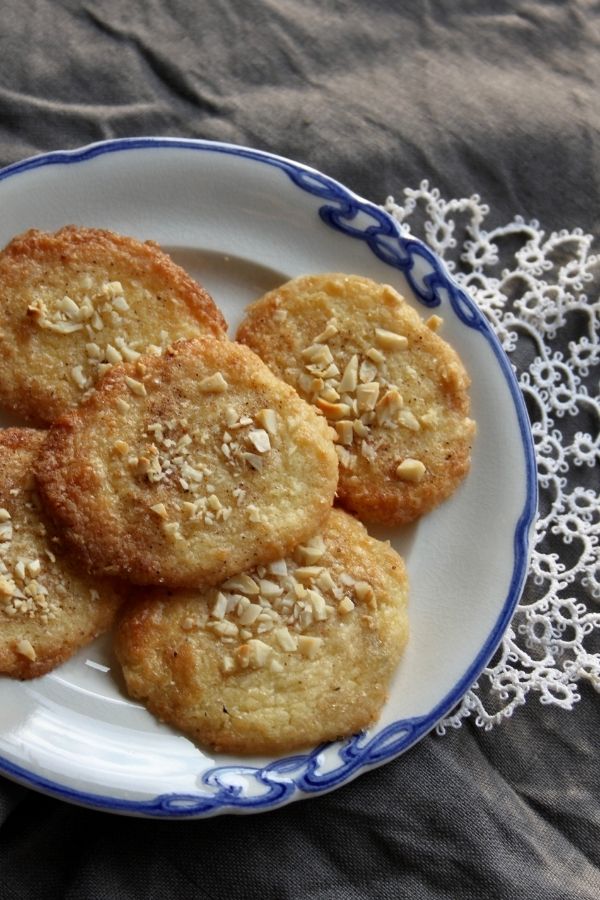
Honninghjerter
If you are reading this in December and want to make some honninghjerter, honey hearts, for Christmas this year, you are out of luck. Traditionally, the bakers in the brethren congregation free town, Christianfeld, where honninghjerter were invented, would make the pre-dough in August.
Most modern bakers only age their pre-dough for 4-5 weeks now but it only gets better with time so if you have space in your fridge, you could make the pre-dough now and have it ready for Christmas next year.
Otherwise, a good rule of thumb is to make the pre-dough a week before Halloween if you want honninghjerter for the first Sunday in Advent.
Honninghjerter are the closest thing we have to the old peberkager, peppered cakes. Peppered meant spiced, not merely spiced with pepper. Since honey hearts stored well in an airtight container for months on end they quickly became a popular treat year-round and spread throughout the country.
These days, most people buy them from bakeries and only eat them at Christmas time.
~ How to Make Honninghjerter ~
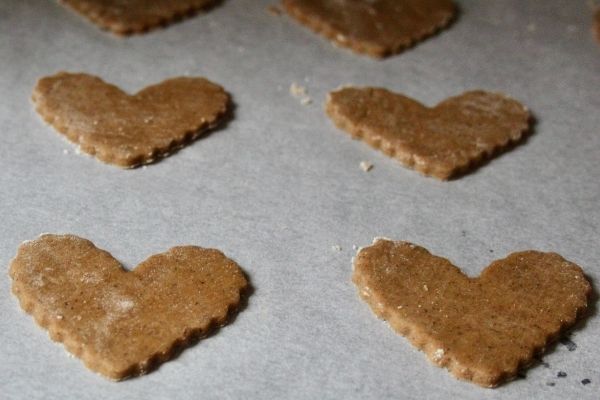
Havregrynskugler
Havregrynskugler, rolled oat balls, come in many varieties both in terms of ingredients and coatings. They were “invented” in Denmark (other countries have invented very similar versions at different points in time) as a thrifty treat during the World War 2 rationing system.
In the forties and fifties, it was presented as a treat at children’s birthday parties. Somehow it morphed into primarily a Christmas treat, which even the old folks, who got them during the rationing still enjoy.
As this little treat doesn’t require the use of an oven, it’s one that many children are allowed to make on their own very early on. While they are a favorite amongst children, you can make some darn good versions containing alcohol as well.
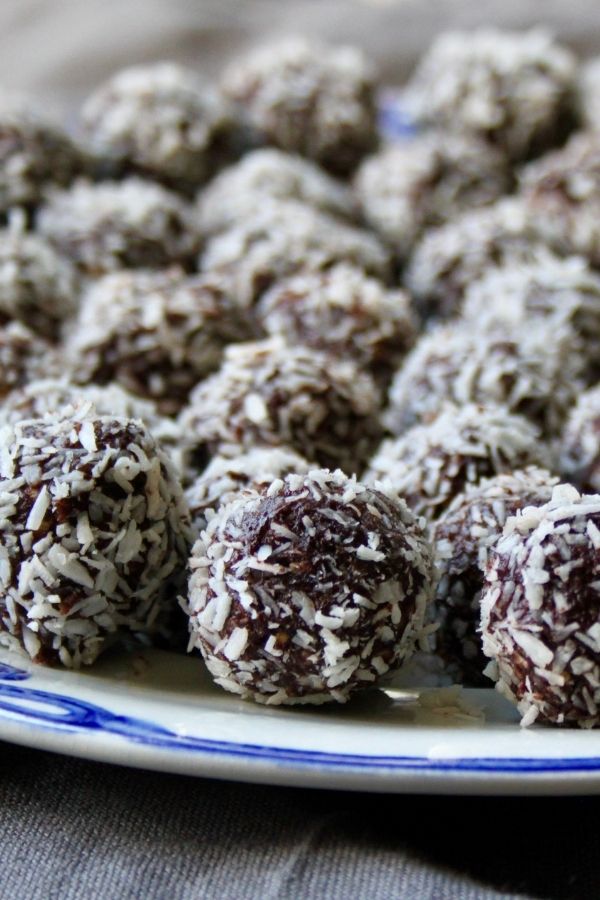
Klatkager
Now we’re moving a bit out of traditional Danish cookies and more into the “bite-sized treats” category. Klatkager are more of a pancake, but still served as a treat along with cookies.
Klatkager is a simple way to use up leftover risengrød, which most Danes eat many times for dinner in December leading up to Christmas. Klatkager is an afternoon treat you have with coffee, tea or glögg, but you can also make risalamande, which is more of a dessert.
Klatkager were originally made by simply frying the leftover risengrød on a pan. Today, most people turn the risengrød into more of a batter by adding eggs and flour which elevates the texture of the klatkager. Even in this elevated version, it’s a very frugal treat.
In some families, mine included, klatkager are had for dinner the day after we have risegrød for dinner (rice doesn’t store well once cooked). We simply limit the amount of sugar and jam consumed when we have it for dinner.
~ Danish Klatkager ~

Luciaboller
These Swedish buns made with saffron are loved by most Danes as well. In Sweden, they are served for breakfast on Lucia day, December 13th. Danes eat them throughout December and frequently as an afternoon treat rather than for breakfast.
These buns are steeped in Christianity and folklore, but most Danes are barely aware of this. They do recognize the connection to St. Lucia but most can only tell you it has something to do with lights.
The general lack of knowledge about the history and significance of the luciaboller doesn’t impede the Danes’ enjoyment of them.
They are an expensive treat, containing the world’s most expensive spice, saffron. But fear not, they can be made with a much cheaper alternative, turmeric. This changes the flavor a lot, (some, me included, would argue for the better) but keeps the all-important yellow color.
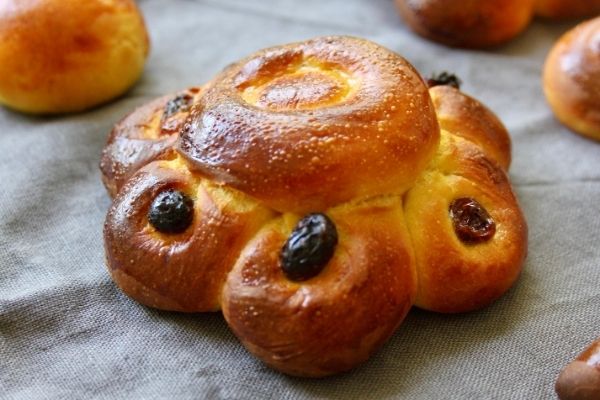
Scandinavian Holiday Inspiration
Still looking for more ideas? I have a huge list of Scandinavian Holiday Recipes from every Nordic country.
For more cookies, you could always try some of these delicious Norwegian cookies, we won’t judge you for making Scandinavian inspired cookies spread instead of a purely Danish one, since we just discovered that “Danish” is fairly fluid anyway.
You could also take a look at these Danish Christmas recipes for all the other good things Danes eat during Christmas or learn more about the Danish Christmas tradition.
If you are curious about what Danes eat those 11 other months of the year where we don’t indulge as much (at least in theory), take a look at Danish food in general.





